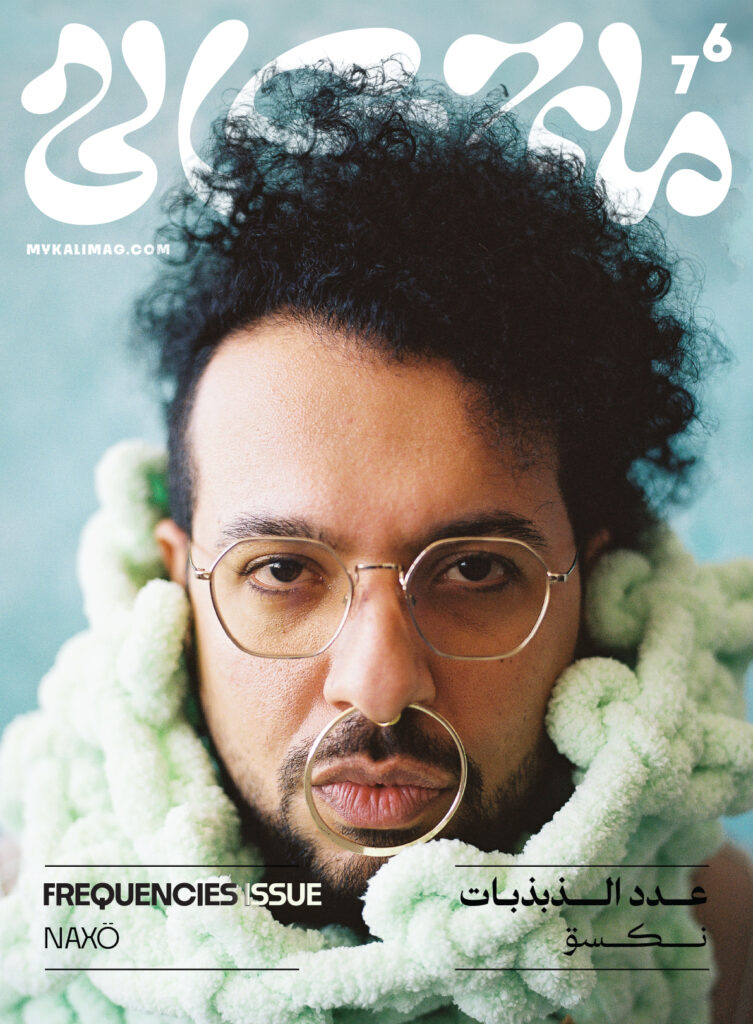Cars honking and the song of gas trucks. An unexpected gasp. The vibrations that come through thin walls. Cats screaming in a nighttime brawl. Generators or fans humming. Signal and static coming through radio speakers. Wind in the trees or water crashing on the shore. “sakadili w makdili, shed sha3ari w kandarili.” Snapping. Tisking or clicking of tongues. Tense silence hanging in the air.
In the Frequencies Issue, we listen for reflections on sound as an aesthetic production, as something that pulses through our lives and bleeds into spaces, as something that is projected and experienced. It can provide a powerful metaphor for that which we can’t explain in words, including our experiences of queerness and the ways we sense and make sense of the world. And, in contexts where we don’t feel we can express ourselves fully, it can provide us solace and space to experiment.
Since publishing our Open Call, the frequencies that pulse through our world have been altered dramatically. Somewhere between spiking peaks and jagged rhythms, noise and silence, new choruses loop through our minds, jolting us to action, haunting us, soothing us. Sound – whether as something we are witnessing or experiencing – is pointing toward shifting relationships between individual and collective, space and politics, us and ourselves.
Scroll, tap. Scroll, tap. The buzz of drones. Crashing bombs. Songs of resistance.A scream. Parents mourn the death of their child. Reading of an ever-growing list of names. Silence, but not really. “Political talk” and condemnations. Lullabies. Mocking songs and appropriated sounds. Chants and counter-chants. Thumping.
What does a reorientation toward sound reveal about our worlds? What does it mean to “sound queer”? What might it show us about our identities, our position, or how we move through space? How do voices, noises, and melodies move us, whether it’s in their presence or absence?
Through their reflections, stories, and commentaries – sonic, visual, and written – contributors explore political and social, incidental and inflicted, healing and traumatizing. Featured artists speak to the intersections of sound and healing; of mixing musical genealogies and geographies; of the connection between sound and nature; and more. Other works consider the ways that sound can pull collectives and collaborations together, how privileged voices come to dominate spaces, and how personal relationships and voices change through transitions. Further works look at the histories of sound in queer clubbing scenes, to the languages that we form to protect us or create boundaries, to the ways that sounds of trauma are documented in text, to the building of fictional words through the voice.
In this issue, we hope you experiment with us to imagine the promise of resonance and the potentials of dissonance.

Featured on the cover is artist Naxö.
Interview by Nour Shtayyeh
Transcribed and translated by Hiba Moustafa
Photography & creative direction by Mouna Tahar
Styling by Samer Owaida
Makeup and hairstyle/design by Mouna Tahar
Cover design by Morcos Key
Cover design assembled by Alaa Sadi
Editor-in-Chief Khalid Abdel-Hadi
Featured artwork by Lina A

